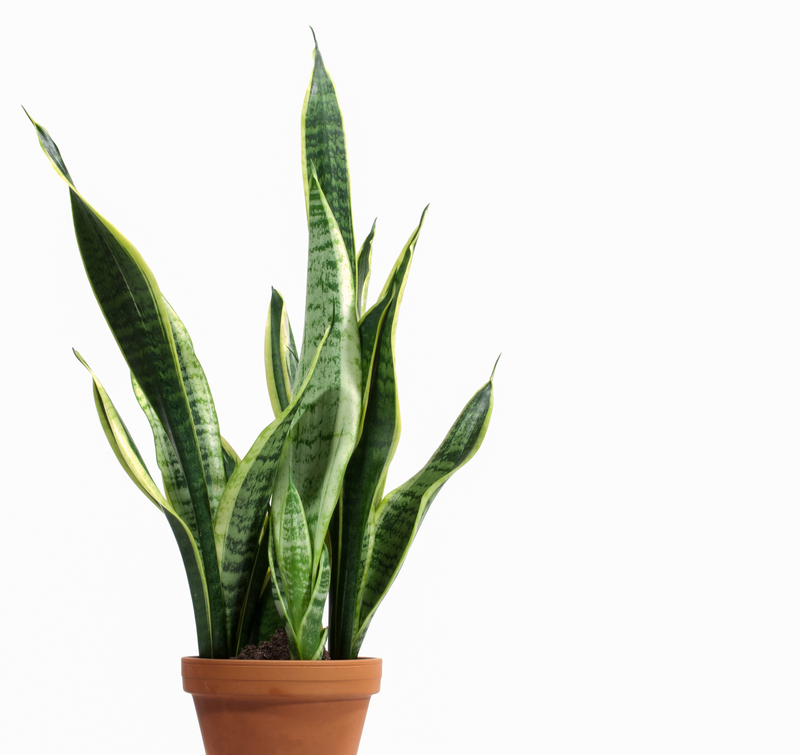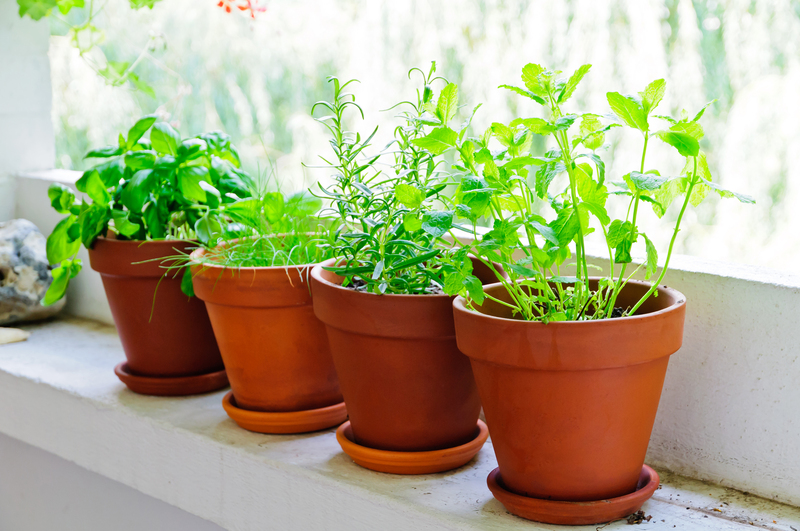Creating Private Paradises: Tall-Potted Greenery as Living Fences
Is your backyard more "open book" than secluded sanctuary? Tall-potted greenery that doubles as living fences is the secret ingredient for homeowners aiming to effortlessly blend privacy and natural beauty. With urban backyards shrinking and privacy at a premium, using plants in containers to form natural screens is a blossoming trend for creating lush, living boundaries without building an actual wall.

Why Choose Potted Greenery as Living Fences?
There are many reasons why tall potted plants make outstanding living fences for backyard retreats. Unlike static wooden or metal fences, these green barriers offer dynamic foliage, seasonal color, and environmental benefits beyond just marking a boundary.
- Flexibility: Pots can be rearranged for light, style, or function.
- Space-Saving: Ideal for small lots and patios with limited planting beds.
- Soil Control: Perfect for yards with poor soil or buried obstacles.
- Mobility: Easily modify your living fence as your needs or design vision evolves.
- Seasonal Adaptation: Bring cold-sensitive plants inside or swap perennials for evergreens as climate changes.
Let's dive into how to select tall potted plants for privacy screens, care for them, and transform your backyard into a verdant oasis.
Key Factors When Choosing Tall-Potted Living Fences
1. Height and Growth Habit
Height matters! For true privacy from neighbors or unsightly views, look for plants that reach 6-10 feet or more in containers. Their natural habit should be upright and dense, not sprawling or shrubby, to maximize coverage.
- Bamboo species excel at fast vertical growth
- Clumping grasses like Miscanthus offer both height and soft movement
- Slender evergreens such as junipers and cypresses provide year-round privacy
2. Container Suitability
Not all plants thrive in pots long term. Choose varieties with a compact root system or those specifically known for tolerating container life. Avoid species that become root-bound quickly or require frequent repotting.
3. Light and Climate Requirements
Match your plant selection to your backyard's light exposure:
- Full sun: Many bamboos, ornamental grasses, and sun-loving evergreens
- Partial shade: Ferns, camellias, and certain laurels
4. Evergreen vs. Deciduous Greenery
Evergreens provide year-round screening and structure, while deciduous options can offer dramatic seasonal interest, such as flowering in spring or colorful fall foliage. Mixing both delivers the best of all worlds.
5. Maintenance Needs
Financially and practically, selecting low-maintenance, pest-resistant, and drought-tolerant species saves you time and stress--especially if you have a busy schedule or vacation frequently. Sparse grooming and infrequent watering is ideal for most homeowners.
Top Tall Potted Plants That Make Excellent Living Fences
Bamboo: Nature's Green Barrier
Bamboo in containers is the gold standard for building tall living screens, thanks to its rapid growth and feathery elegance. Favor clumping varieties like Fargesia over running types--they're easier to confine, less invasive, and ideal for pots.
- Key Benefits: Fast-growing, evergreen, wind-resistant
- Height: Up to 10-15 feet in optimal conditions
- Care: Regular watering, partial to full sun, feed with slow-release fertilizer
Columnar Evergreens: Year-Round Walls of Green
Plants like Sky Pencil Holly (Ilex crenata), Italian Cypress (Cupressus sempervirens), and Spartan Juniper serve as living architectural elements.
- Key Benefits: Maintains shape, minimal pruning
- Height: 6-15 feet in large containers
- Care: Full sun, well-drained soil, water deeply but infrequently
Ornamental Grasses: Ethereal Privacy
If you prefer a softer and more contemporary look, tall potted ornamental grasses make outstanding privacy screens. Varieties like Miscanthus 'Gracillimus', Pampas Grass (Cortaderia selloana), and Pennisetum 'Vertigo' offer movement and texture as their feathery plumes sway in the breeze.
- Key Benefits: Drought-tolerant, fast-growing, adds visual softness
- Height: Ranges from 4-10 feet in large pots
- Care: Full sun to partial shade, cut back in winter
Flowering Shrubs: Privacy with a Pop of Color
Lavender, Oleander, Camellia, Hibiscus, and Viburnum can be grown in oversized containers for privacy and seasonal blooms. These double-duty plants enhance backyard ambiance with fragrance and color.
- Key Benefits: Pollinator-friendly, beautiful blooms, fragrant foliage (in some species)
- Height: 6-8 feet, depending on the variety and pot size
Edible Living Fences: Beauty with Benefits
Why not have a privacy hedge that feeds you? Fruit trees (like columnar apple or espaliered fig), blueberries, or even grapevines on trellises can provide both screening and a harvest when grown in large containers.
- Key Benefits: Fresh produce, seasonal interest, multipurpose
- Care: Slightly higher maintenance--requires regular pruning and fertilizing
Caring for Potted Living Fences: Essential Tips
Container Choices for Size and Style
Choose large, frost-resistant containers (at least 18-24 inches in diameter and depth) for stability and enough soil volume. Use materials like ceramic, fiberglass, or concrete to avoid tipping in strong winds, and ensure they have ample drainage holes.
Soil & Feeding
Use a high-quality, free-draining potting mix, and refresh the soil every 2-3 years. Slow-release fertilizers nourish heavy feeders: many living fence plants benefit from two feedings per season.
Watering Wisdom
Potted greenery dries out faster than in-ground plants, especially in sunny exposure. Automated drip lines or self-watering pots help keep your living fences lush with less effort.
Pruning & Grooming
Trim regularly to encourage dense growth and maintain your desired height. For evergreens and grasses, yearly pruning is minimal, while flowering shrubs may need shaping twice a season post-bloom.
Design Inspiration: Stylish Ideas for Living Fence Arrangements
- Linear Row: Line up uniform pots along your boundary to mimic a traditional hedge--perfect for a minimalist look.
- Clustered Groups: Mix heights and varieties in clusters for a lush, layered appearance with natural gaps and visual flow.
- Trellised Pots: Add trellises to large pots for vining plants like clematis or jasmine--great for flowering screens with vertical drama.
- Stepped Arrangement: Stagger pots by height to create a "green wall" effect, or use on sloped yards for extra privacy and interest.
Personalize with decorative containers, companion plants, or underplanting with groundcovers and trailing vines to soften the base.
Sustainable and Wildlife-Friendly Living Fences
With environmental concerns on the rise, potted plant screens can be low-impact alternatives to traditional fences. Living fences can:
- Absorb street noise and filter particulates
- Serve as important habitats for pollinators and birds
- Reduce heat and glare in sun-drenched backyards
*Consider native species for the best results in local wildlife support and easier maintenance.*
Common Mistakes to Avoid with Potted Living Fences
- Choosing undersized pots: Small containers restrict growth and topple easily.
- Neglecting root space: Overcrowded roots limit long-term plant health and stability.
- Poor drainage: Ensure all pots have multiple drainage holes to prevent root rot.
- Ignoring light needs: Sun-loving plants in shade will fail to thrive (and vice versa).
- Underwatering: Especially in summer, potted greenery requires regular moisture checks.

Frequently Asked Questions: Tall-Potted Greenery as Living Fences
-
Q: How tall can container-grown living fences realistically get?
A: With the right plants and large containers, expect up to 10-15 feet for many bamboo, cypress, and grass species. Regular repotting keeps vigorous roots healthy and upright. -
Q: Can potted living fences handle severe winds?
A: Heavier pots and wind-resistant plants like bamboo or Sky Pencil Holly are best. Clustered arrangements with staggered heights help break up wind and add stability. -
Q: Are living fences good for renters?
A: Absolutely! Container privacy screens are a non-permanent way to transform patios or decks without damaging property. -
Q: How quickly do living fences grow?
A: Fast-growers like bamboo and ornamental grasses can provide decent screening within a growing season, while most evergreens take 2-3 years to reach full height.
Conclusion: Your Private Backyard Oasis Awaits
Transform your yard into a private paradise by selecting tall-potted greenery that doubles as living fences. Whether your goal is screening, sound buffering, visual interest, or an edible harvest, the key lies in matching the right plants, containers, and care routines to your unique space.
With a little planning, your living fence will become a vibrant, ever-changing backdrop for relaxing, entertaining, and enjoying the outdoors with peace and privacy for years to come.